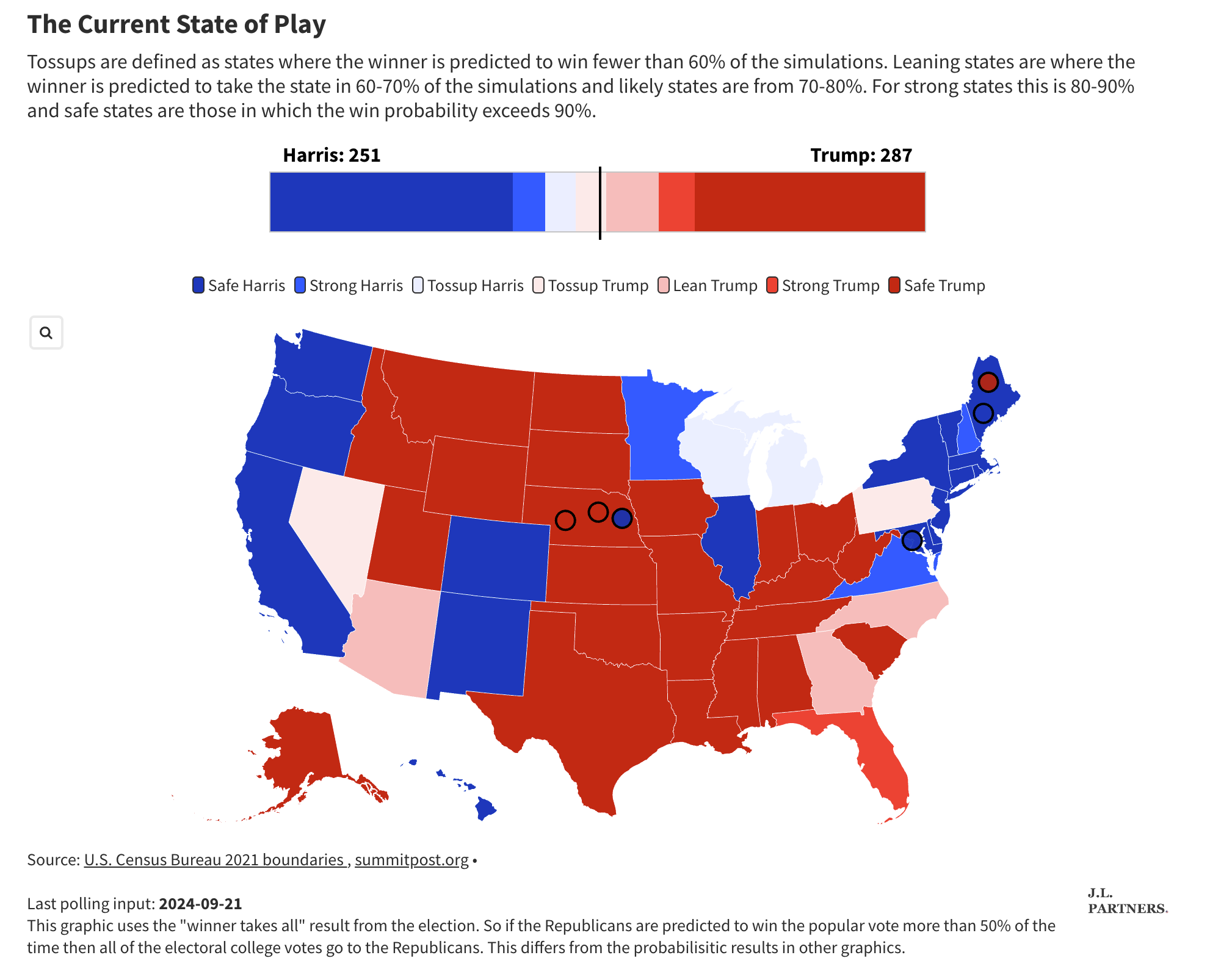Former President Donald Trump is gaining momentum in key election forecasts for the 2024 presidential race, edging closer to a potential comeback. According to a recent model from J.L. Partners, Trump now has a 50.9% chance of winning. This marks a notable shift as the race tightens in battleground states that were previously seen as Democratic strongholds under Vice President Kamala Harris’s campaign.
The “blue wall” of traditionally Democratic-leaning Rust Belt states is showing signs of weakening as Trump gains ground in Pennsylvania, Michigan, and Wisconsin. These states were crucial to President Joe Biden’s 2020 victory, but recent polls suggest that Trump is attracting more support from voters concerned about inflation, immigration, and the Biden administration’s economic policies.
J.L. Partners’ presidential model, which factors in various long- and short-term elements, indicates that these shifts reflect a broader trend nationwide. With Harris struggling to secure strong support in these key states, the Democratic Party could face significant challenges as November approaches.

The J.L. Partners forecast utilizes a sophisticated two-stage Bayesian process to predict election outcomes. This model leans heavily on historical data, analyzing economic trends, approval ratings, and voter behavior over the past 80 years. It evaluates both long-term fundamentals, like economic growth and unemployment, and short-term factors, including consumer confidence and Congressional approval ratings, particularly since the 1996 election.
The model’s approach integrates these elements into what it terms the “Presidential Prior”—a projection of vote share for each candidate before incorporating polling data. Polling information is then introduced, with a meticulous filtering process to adjust for third-party candidates and state-level variations.
A key aspect of the J.L. Partners model is its emphasis on state-level polling, which is combined with national data to produce precise predictions. In states such as Pennsylvania and Michigan, where Trump has been gaining ground, the model’s autoregressive Bayesian algorithm captures these shifts. It also accounts for states with less frequent polling by drawing insights from similar states, ensuring the model remains reliable even in areas with sparse data.
For example, data from Pennsylvania can be used to infer trends in Illinois due to their similar demographics and economies. This approach, combined with national polling data, refines the model’s prediction of Trump’s chances. Kamala Harris, tasked with defending the Democratic hold on the Rust Belt, has struggled to maintain voter alignment in these crucial states. Trump’s increasing appeal, especially among working-class voters frustrated with the economy, has led to a decline in Harris’s support.
The model also incorporates factors such as voter turnout and the influence of third-party candidates who might draw votes away from the main contenders. This poses a significant challenge for Harris as she faces not only Trump but also growing voter dissatisfaction in the Midwest. Although the election is still weeks away, the latest data reveal a troubling trend for Democrats. While Trump’s lead remains narrow, his recent surge in momentum could potentially secure his return to the White House.


